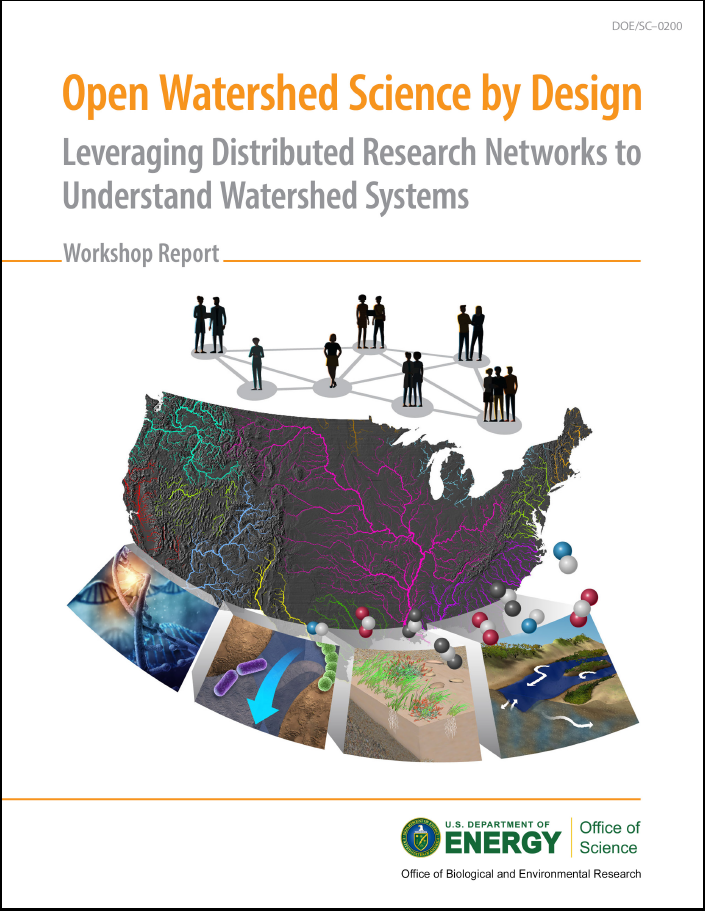Open Watershed Science by Design: Leveraging Distributed Research Networks to Understand Watershed Systems Workshop Report
- Print Publication: October 2019
- Workshop Dates: January 28–30, 2019
- Report Download: Fast-download PDF
- Report Download: Print-quality PDF
This report summarizes discussion and outcomes from the January 2019 workshop. The Climate and Environmental Sciences Division (CESD) within the U.S. Department of Energy’s (DOE) Office of Biological and Environmental Research (BER) funds basic research that addresses key uncertainties in the understanding of Earth system components, such as watersheds and the subsurface, and spans a wide range of spatial and temporal scales, from molecular to global and from nanoseconds to decades. Within CESD, the Subsurface Biogeochemical Research program (SBR) is focused on advancing a robust, predictive understanding of how watersheds function as integrated hydro-biogeochemical systems and how these systems respond to disturbances such as changes in water recharge, availability, and quality; contaminant release and transport; nutrient loading; land use; and vegetative cover. SBR investments in watershed system science directly support CESD’s mission to enhance the predictability of the Earth system by supporting process research and long-term field studies, making use of BER and other DOE user facilities, undertaking data analytics, and enhancing advanced codes and using best-in-class computing resources. SBR research contributes specifically to CESD’s integrated water cycle, biogeochemistry, and data-model integration grand challenges (U.S. DOE 2018). In addition to addressing CESD’s mission and grand challenges, the SBR program is integrating research activities funded by both CESD and BER’s Biological Systems Science Division (BSSD), by continuing to support a wide range of spatial and temporal scales of research. For example, the SBR program supports research activities spanning molecular-scale studies of geochemical stability, speciation, and biogeochemical reaction kinetics to field-scale processes involving flows of groundwater and surface water, nutrient loading and cycling, contaminant transformation and transport, and other key hydro-biogeochemical processes. Collectively, SBR research activities directly address the Microbial to Earth System Pathways grand challenges identified by the Biological and Environ- mental Research Advisory Committee (BERAC) in its 2017 grand challenges report (BERAC 2017), as well as some aspects of the Earth and Environmental Systems Sciences grand challenges.
Suggested Citation: U.S. DOE. 2019. Open Watershed Science by Design: Leveraging Distributed Research Networks to Understand Watershed Systems Workshop Report, DOE/SC-0200, U.S. Department of Energy Office of Science. ess.science.energy.gov/open-watershed-workshop/.

